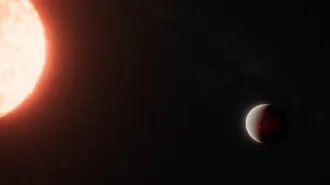Spinning up to hundreds of times a second and packing an entire sun’s mass into a sphere just slightly wider than the length of Manhattan, a neutron star ranks among the weirdest objects in the universe. Astronomers have for the first time discerned a hot spot on the surfaces of three of these cosmic oddities.
The X-ray–emitting spots, estimated to range in size from the area of a football field to that of a golf course, are the smallest features that astronomers have detected on objects so far away, in this case from 500 to 2,000 light-years from Earth.
Researchers have proposed that such a hot spot arises when the strong magnetic fields around a cooling neutron star funnels energy back onto a small patch of the star’s surface. According to this theory, this magnetic funneling happens in the same way on all neutron stars and all hot spots should be about the same size.
Patrizia Caraveo of the National Institute of Astrophysics in Milan, Italy, and her colleagues detected the rapid rise and fall of X rays from hot spots on three neutron stars—Geminga, PSR B0656+14, and PSR B1055-52—using the superlative X-ray–:collecting mirror of the orbiting XMM-Newton Observatory. The team calculates that the hot spots on the neutron stars vary from 100 meters to as much as 4 kilometers across.
“It’s impressive that we can see such small spots from so far away with this kind of detail,” says Dong Lai of Cornell University. However, he says, the apparent size difference in the hot spots might result from the simplifying assumptions by Caraveo’s team. More-nuanced models and more data ought to determine whether the spots are the same size, he says. Caraveo’s team reports the findings in the April 20 Astrophysical Journal.







